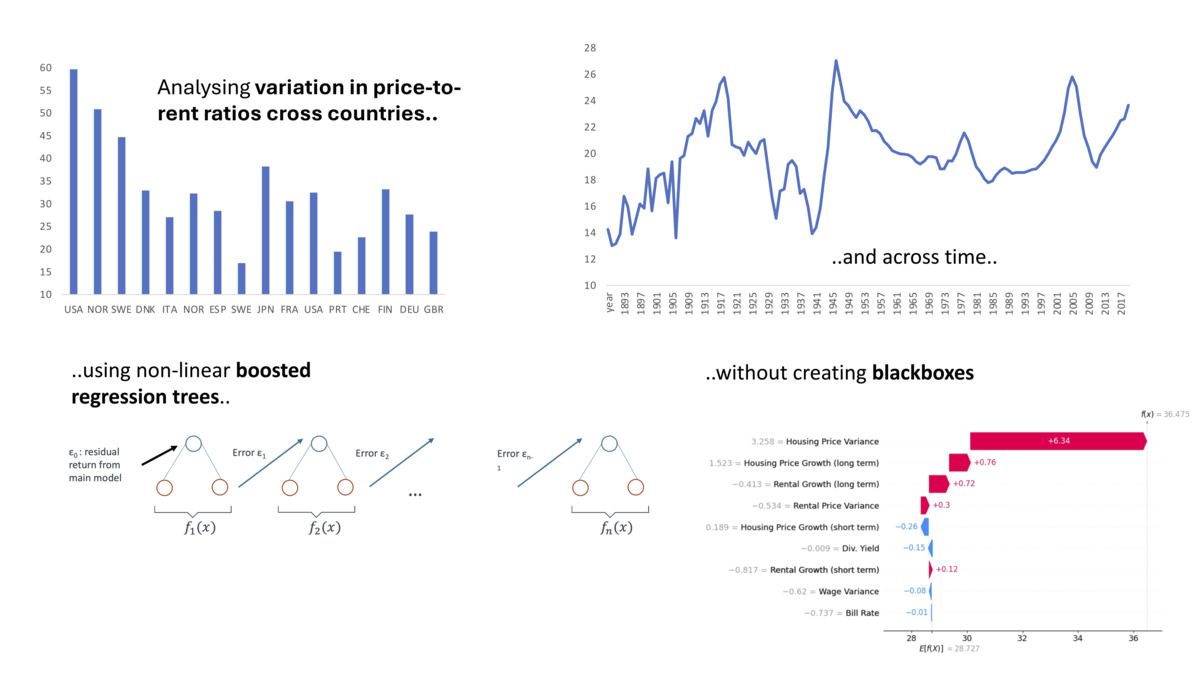Current issue
Online first
Archive
About the Journal
Aims and scope
Editorial Board
International Editorial Board
List of Reviewers
Abstracting and indexing
Ethical standards and procedures
REMV in Social Media
Contact
Instructions for Authors
Instructions for Authors
Manuscript formatting template
Title page
Highlights
Payments
‘Ghostwriting’ and ‘Guestauthorship’
Guidelines for Referees
Editor's Choice
Understanding price-to-rent ratios through simulation-based distributions and explainable machine learning
1
Finance and Data-Science, Duale Hochschule Baden Wurttemberg Mannheim, Germany
Submission date: 2024-10-01
Final revision date: 2025-03-11
Acceptance date: 2025-04-25
Publication date: 2025-09-15
REMV; 2025;33(3):36-48
HIGHLIGHTS
- we estimate the median housing risk-premium to be 3.6
- price-rent-ratios exceed 33 in only 10% of all years
- higher price variances seems to lead to higher PTR-ratios
- higher income variance seems to lead to lower PTR-ratios
KEYWORDS
real estate financeproperty valuationprice rent ratioexplainable machine learningproperty investment
TOPICS
ABSTRACT
Index-level price-to-rent (PTR) ratios are a widely used metric for analyzing housing markets, employed by both real estate practitioners and policymakers. This article seeks to improve the contextualization of observed PTR values by examining the interplay between these ratios and macroeconomic and housing-market developments in a non-linear framework. We analyze historical data on housing prices, rents and macroeconomic developments from 18 advanced economies, spanning from 1870, using Boosted Regression Trees and explainable machine learning techniques. As a precursor to this analysis, we also present the empirical distribution of the price-to-rent ratio and the implied housing risk premia across all years and countries.
Share
We process personal data collected when visiting the website. The function of obtaining information about users and their behavior is carried out by voluntarily entered information in forms and saving cookies in end devices. Data, including cookies, are used to provide services, improve the user experience and to analyze the traffic in accordance with the Privacy policy. Data are also collected and processed by Google Analytics tool (more).
You can change cookies settings in your browser. Restricted use of cookies in the browser configuration may affect some functionalities of the website.
You can change cookies settings in your browser. Restricted use of cookies in the browser configuration may affect some functionalities of the website.




